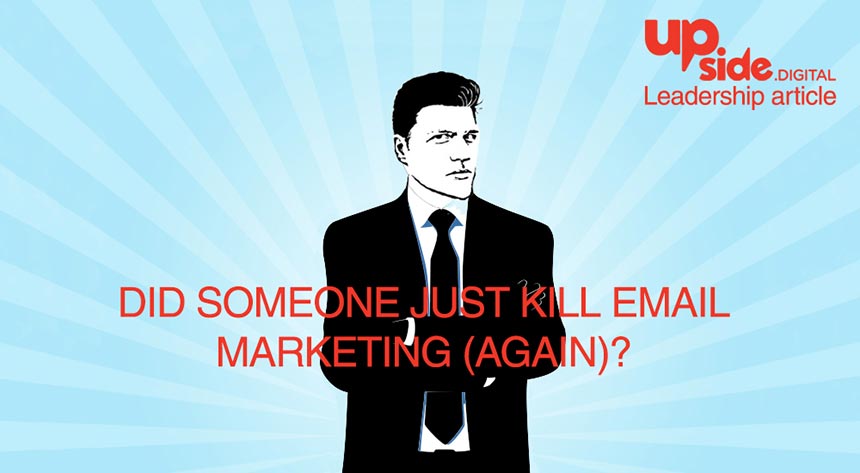2017 – The year Advertisers and Consumers Loved email again
So, it looks like 2017 is the year that advertisers and consumers come to love email again. To be fair, email has always been a good friend, that friend who is so trusty and reliable that they are known for being dependable but perhaps not the most exciting in the friendship circle. Sure, sure, we’ve been busy adopting a plethora of other categories, from SEO to Social to Video Marketing and a number of others.
Email has been with us for some 40 odd years, in a marketplace where there are so many sexy new trends to keep up with, we can forgive ourselves for forgetting to continuously give credit to the importance of this weapon in our marketing arsenal. So rather than feeling remorse for our lack of acknowledgements, let’s instead take stock of what is making this channel so appealing in 2017.
Email has continued to be a cheap, yet effective medium that boasts excellent ROI of around $38 for every $1 spent. The simple fact that you have an email list indicates that you have an audience bought into your brand, who have given you permission to market to them! You own that data and you can use that data to learn and continually improve your communication with this audience. You’re not at the mercy of a 3rd party who change their algorithms and put barriers in place between you and your customer (no names shall be mentioned).
In comparison to social media, the average click-through rate on email is 3% vs 0.5% on Twitter. That means email is 60 times more likely to be seen by your customers, not only that but it is more personalised to the target audience than any other channel. Email is 40% more effective at customer acquisition and has higher measurable capabilities including tracking open rates, click-throughs, bounces, forwards, social share and much more.
According to Radicati email statistics report, there will be over 4.9 Billion email addresses worldwide by the end of 2017.
To put that into perspective, as of Q3 2016, there were 1.79 Billion monthly active users on Facebook and 317 Million users on Twitter.
It is going nowhere and this resurgence in email popularity comes, of course, with the advancements in technology and the addition of contextual marketing; delivering real-time, data-based content and/or promotions to your customers. Context has given us the ability to make real-time data, based on different sources, including; geolocation, weather, time, Twitter trends, device, stock trends and more. Based on these real-time variables emails can be generated at the time of open, not send!
Contextual marketing uses data from these different sources to create a precise buyer profile and analysis of buyer behaviour. Location intelligence technology is essential to this, as it enables place and position to be worked into the marketing strategy. This technology will then aid in reducing unsubscription numbers by ensuring that content is relevant, personalised and timely.
More accurate targeting will, of course, lead to greater ROI but ROI is not the only upside that can be expected.
For consumers, this technology will revolutionise the relationship with their favourite brands. A survey completed by salesforce found that 63% of Millenial consumers and 58% of Gen X consumers are willing to share their data in exchange for personalised offers and discounts.
This interaction, to consumers, does not feel like marketing. It feels like their favorite brand “gets them”, which then increases loyalty, repeat purchasing behavior and converts them into brand advocates amongst their peers.
Is it any wonder then, with all of this in mind, that email is making a comeback into the spotlight?
Related posts
[Creating the perfect email design: Techniques to ensure high conversion] “A user interface is like a joke. If you have to explain it, it’s not that good.” –Martin LeBlanc Making the best email is all about putting yourself into the user’s shoes. Think always about the user, like all good design pieces, then about the […]
Does email marketing belong to the past, or have we only scratched on the surface what this ‘old fashion’ sales channel can do? Well, fact is that its position on the Iron Throne of the ROI Kingdoms has been unchallenged for many years, and the trend is not changing. In fact, we see the opposite […]
When working with bloggers you come across many great writers, passionate and dedicated to their cause of producing great content for their subscribers. After all this is the reason they started their blog. Share the passion and show/teach others what is most valuable to them, and closest to their hearts. Unfortunately most bloggers are not […]




